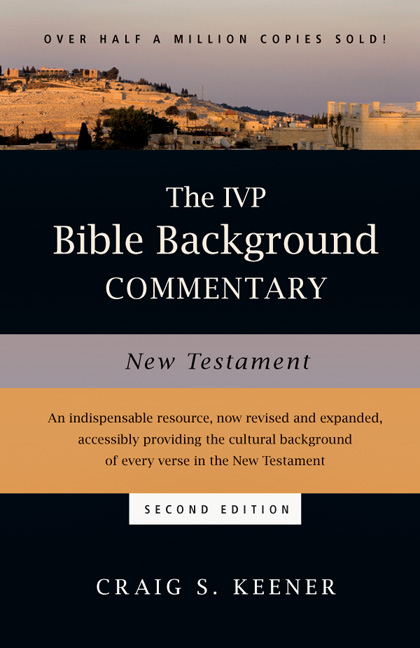Rightly Understanding God’s Word, by Craig S. Keener
Where do we look to find the central revelation of God’s character (Jesus’ “weightier matters”) that helps us rightly apply the rest of God’s Word? God revealed His law to Israel, but both Old Testament prophets and the New Testament show that some aspects of that law applied directly only to ancient Israel in a particular time (though we can all learn from its eternal principles). The prophets offered dynamic applications of the law based on knowing God’s heart. But God has most fully revealed His heart and His Word by sending us Jesus; when His Word became flesh, He revealed God’s heart (Jn 1:1-18). When Moses received the law on Mount Sinai, he saw some of God’s glory, some of His character of grace and truth; but no one could see God fully and live (Ex 33:18-20; 34:6). In the Word become flesh, however, God revealed His glorious grace and truth fully (Jn 1:14, 17); now the unseen God has been fully revealed in Jesus Christ (Jn 1:18; 14:9).
In this study, we will look further at context; whole-book context; background; and specific principles for understanding specific kinds of writings in the Bible (such as psalms, proverbs, laws, and prophecies. These are essential principles for learning what God was saying to the first readers, a necessary step in hearing how to apply God’s message today. But we still need God’s Spirit to guide us in how to apply His message to our own lives, to the church today, and to our world. There is more than one way to hear God’s voice (we hear Him, for example, in prayer), but it is through study of Scripture that we learn to recognize His voice accurately when He speaks to us in other ways. Paul warns that we both “know in part and prophesy in part” (1 Cor 13:9). That is why it is good for us to depend on both Scripture and the Spirit to help us hear accurately. But the Spirit will not truly say something that contradicts what He already inspired Scripture to say (the way He gave it to us, in context).
Note: many ideas in the genre parts of this manual closely follow Gordon Fee and Douglas Stuart’s How to Read the Bible for All Its Worth (Zondervan). I am especially indebted to their work on psalms and epistles. Most of the rest, however, began especially from inductively grappling with the Bible itself over many years, and then with the ancient sources that reveal the world of the Bible.
This manual may be shared freely but only on the condition that it is always free and that these credits remain. It is for public use, like a sermon, originally designed for use with students in Nigeria, not for traditional publication or financial remuneration. The “background” illustrations can be found in much greater detail in my IVP Bible Background Commentary: New Testament (Downers Grove, IL: InterVarsity, 1993, with about a quarter of a million in print).
—Dr. Craig Keener
Books by Craig Keener
Academic works in biblical studies for a more general audience:

- The IVP Bible Background Commentary: New Testament (Downers Grove: InterVarsity Press, December 1993). Roughly a quarter of a million in print (available in several languages, including Arabic, Armenian, Korean, Polish, Portuguese, and Spanish; being translated into others, including Chinese, French and Russian).
- Revelation, for the NIV Application Commentary series (Zondervan, 1999).
- Matthew (IVP NT series, InterVarsity Press, 1997, 2011).
- Paul, Women & Wives: Marriage & Women’s Ministry in the Letters of Paul (Peabody, MA: Hendrickson Publishers, 1992).
Category: Biblical Studies, Winter 2015


